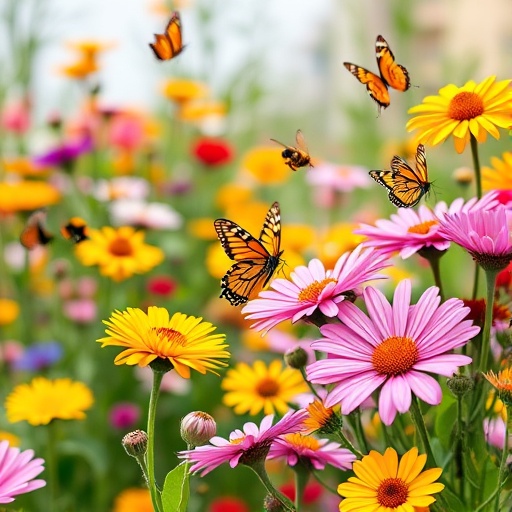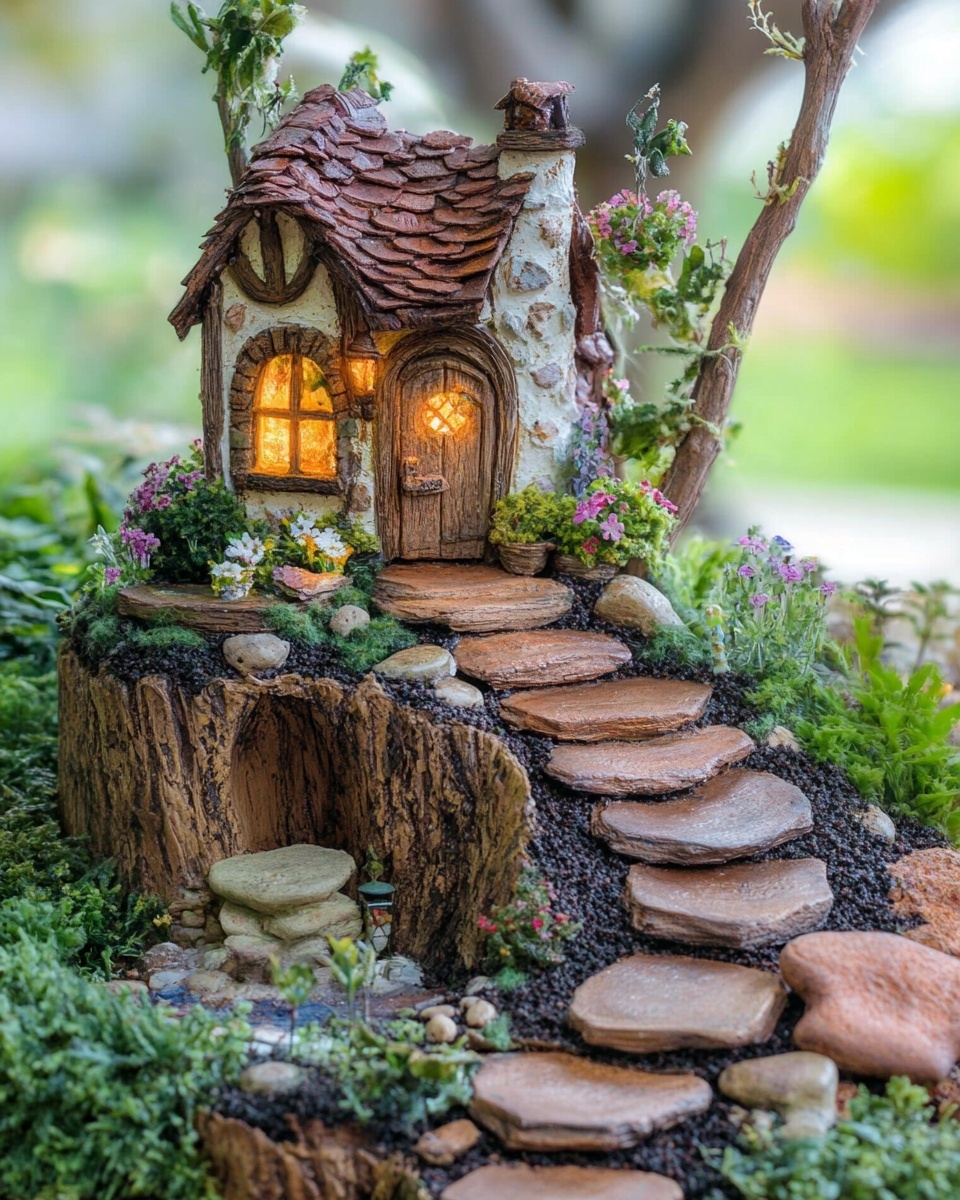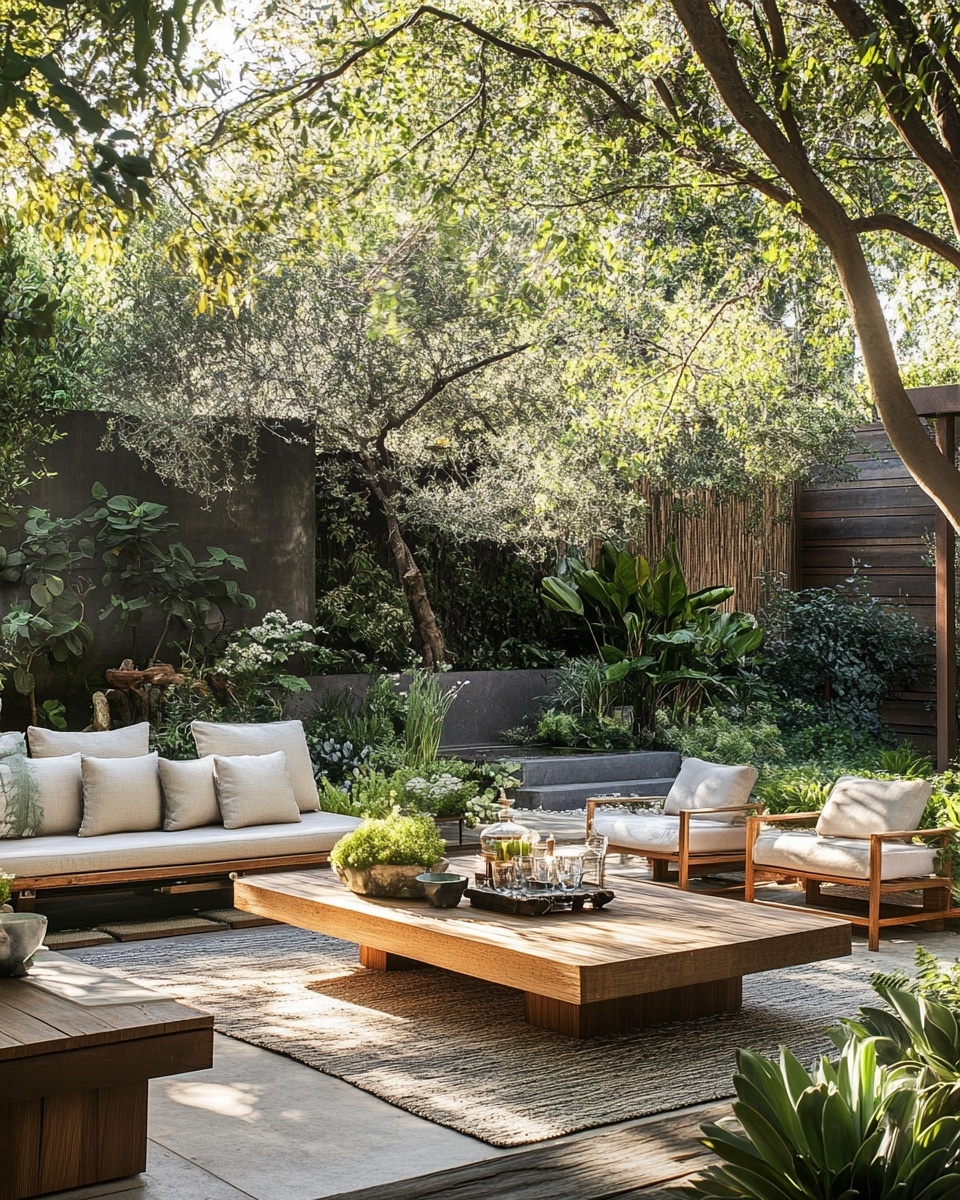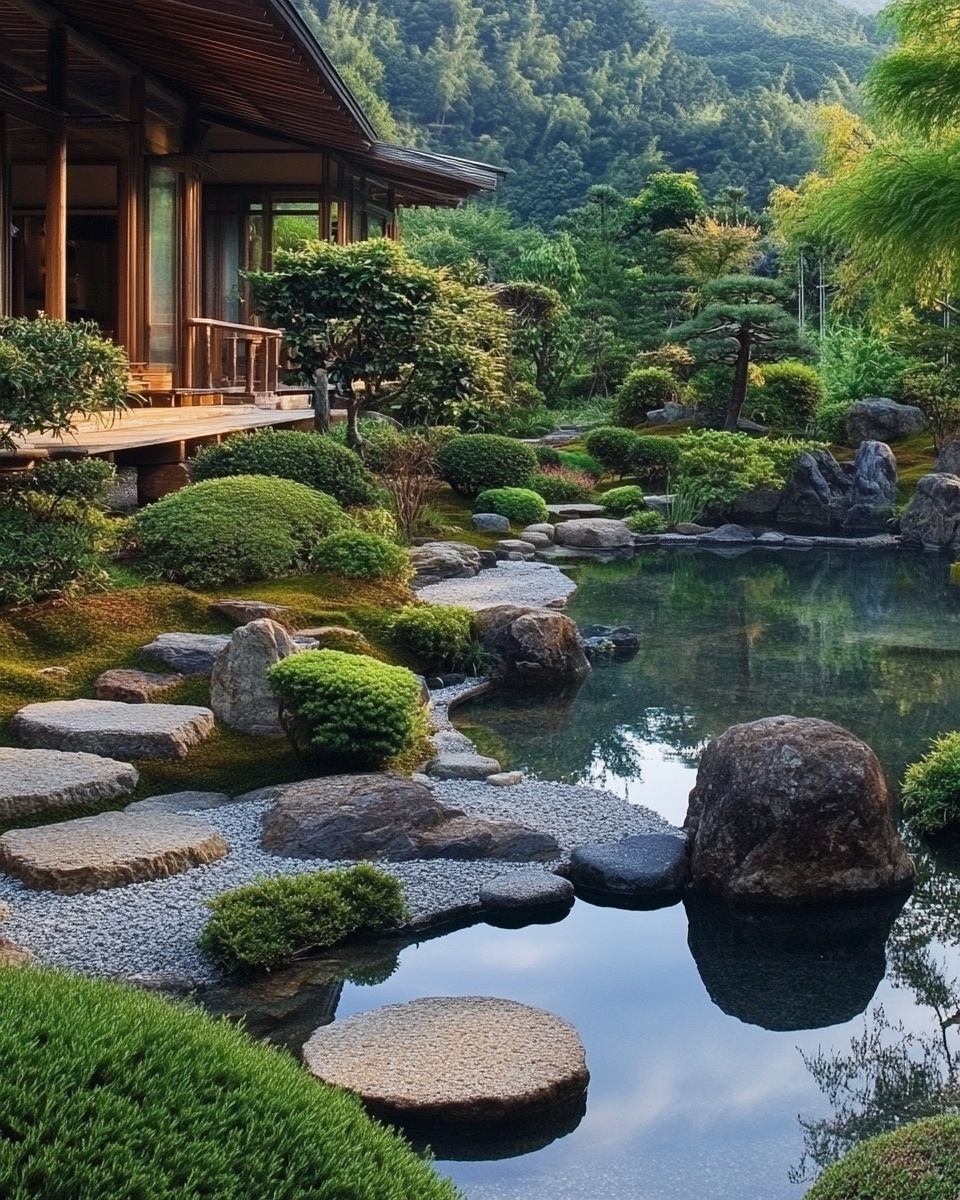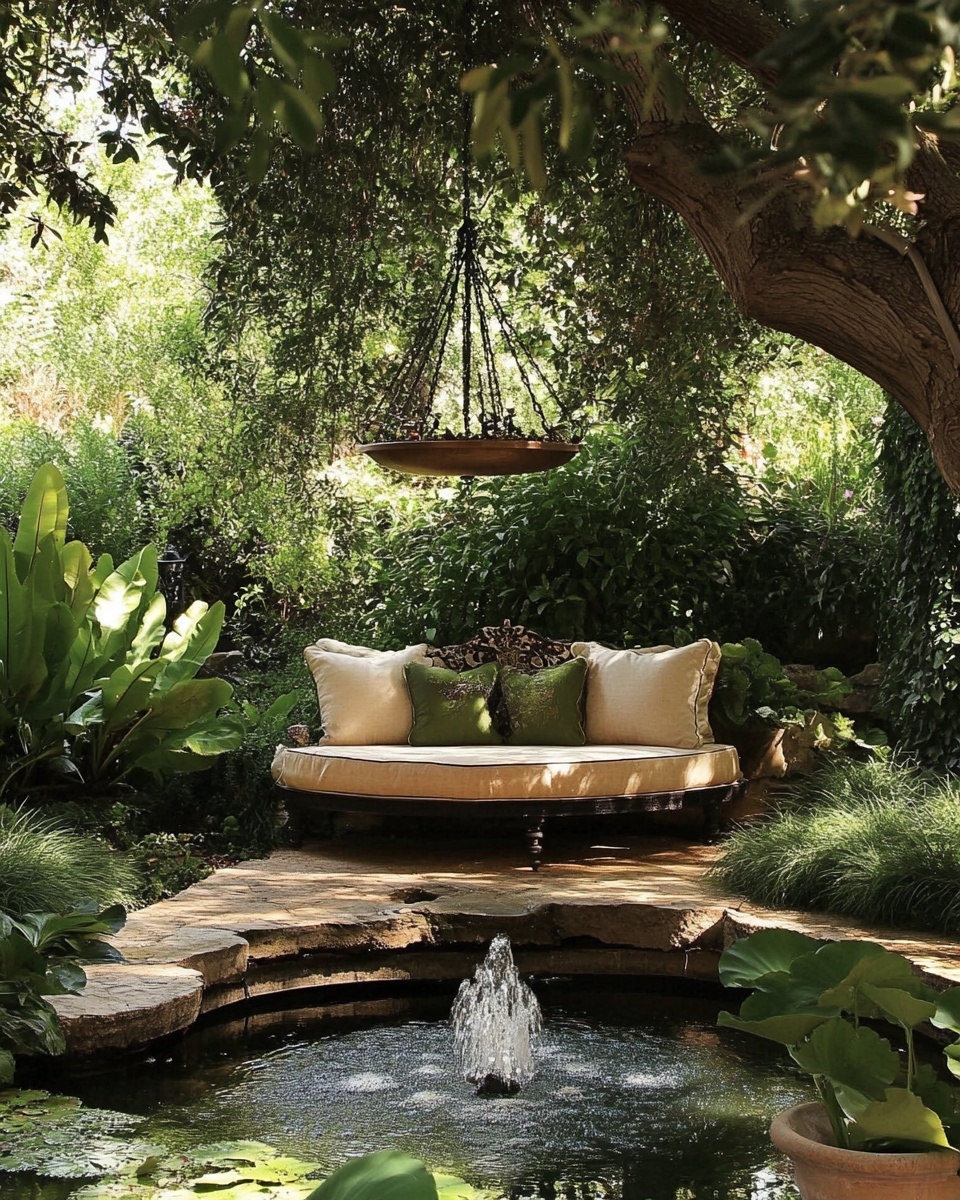Introduction
Did you know that over 75% of flowering plants on Earth rely on pollinators like butterflies and bees to reproduce, yet their populations are drastically declining? This alarming statistic begs the question: what if we could transform our own backyards into vibrant havens, not just for ourselves, but for these essential creatures? Cultivating a thriving Butterfly & Bee-Friendly Garden is more than just a beautiful hobby; it’s a vital act of environmental stewardship. Imagine your garden buzzing with life, a kaleidoscope of butterflies gracefully flitting among colorful blooms, and busy bees diligently performing their dance. This guide will walk you through creating such a sanctuary, proving that even a small space can make a significant ecological impact while bringing immense joy. Join us as we uncover the secrets to attracting these precious pollinators with stunning flora, fostering a healthier ecosystem right at home.
Tools & Materials Needed
Embarking on your journey to create a fantastic Butterfly & Bee-Friendly Garden starts with gathering the right essentials. Don’t feel overwhelmed; many items might already be in your shed, and we’ll offer budget-friendly alternatives!
- Gardening Gloves: Protect your hands from dirt, thorns, and potential irritants. Opt for breathable, durable ones.
- Hand Trowel: Essential for digging small holes for planting seedlings and amending soil.
- Garden Fork: Great for breaking up compacted soil and aerating planting beds. A shovel can serve as an alternative for larger areas.
- Pruning Shears: For deadheading spent blooms and light trimming to encourage more flowers. Look for bypass pruners for cleaner cuts.
- Watering Can or Hose with a Gentle Sprayer: Crucial for consistent watering, especially for newly planted flora. A recycled milk jug with holes poked in the lid makes a fantastic budget watering can!
- High-Quality Potting Mix (for containers): Choose a well-draining mix rich in organic matter. For in-ground gardening, consider a good bag of garden soil amendment.
- Compost or Well-Rotted Manure: This organic matter enriches your soil, improving drainage and nutrient retention. A must-have for a healthy Butterfly & Bee-Friendly Garden.
- Seeds or Starter Plants: Select a variety of pollinator-friendly flowers. Check local nurseries for native options!
- Eco-Friendly Tip: Source seeds from reputable organic suppliers. Opt for native plants as they are often more resilient and require less water.
- Mulch (Straw, Wood Chips, or Shredded Leaves): Helps retain soil moisture, suppress weeds, and regulate soil temperature.
- Bug Netting (Optional): For protecting new seedlings from hungry pests without chemicals.
- Small Shovel or Spade: For larger digging tasks, like preparing new beds.
- Labels or Plant Markers: To keep track of what you’ve planted, especially if starting from seed. Twigs or painted rocks can be charming, eco-friendly alternatives.
Time & Effort Overview
Creating a vibrant Butterfly & Bee-Friendly Garden is a rewarding journey that offers flexibility in its time commitment. Overall, this project falls into the beginner to intermediate difficulty range, depending on the scale you envision.
- Initial Setup (Planning & Planting): Expect to dedicate anywhere from 2-8 hours for a small bed or container garden. Larger garden designs might take 1-2 full weekends. This is comparable to setting up a beginner indoor garden setup.
- Weekly Maintenance: Once established, your butterfly and bee garden will typically require 1-2 hours per week for watering, deadheading, and general observation. This is significantly less than, say, maintaining a sprawling vegetable patch, which can demand 5+ hours weekly.
- Seasonal Care: Twice a year (spring and fall), you’ll want to dedicate 3-4 hours for tasks like adding compost, pruning, and preparing for the next season.
- Growth Rate: Many pollinator-friendly annuals, such as Zinnia and Cosmos, will grow and bloom within 6-8 weeks from seed, approximately 20% faster than some slower-growing perennials. Perennials will establish in their first year and reward you with increasingly abundant blooms in subsequent seasons.
The effort is highly manageable, and the visual and ecological rewards are immeasurable.
Step-by-Step Gardening Process
Step 1: Choose Your Location and Design
Selecting the right spot is paramount for a successful Butterfly & Bee-Friendly Garden. Pollinators love sunshine, so choose an area that receives at least 6 hours of direct sunlight daily. Consider accessibility for watering and enjoyment. Think about layers: taller plants at the back, shorter ones in front. This creates visual interest and provides varying nectar sources. Don’t worry if your space is small; a vertical garden or a few well-placed pots can still make a difference. For inspiration on creating tiered interest, check out layered flower bed design tips.
Step 2: Prepare Your Soil
Good soil is the foundation of a thriving garden. Start by clearing any weeds or debris. Dig down about 8-12 inches, loosening the soil. Incorporate a generous amount of organic matter – compost or well-rotted manure works wonders. This improves drainage in heavy clay soils and water retention in sandy soils. Aim for a crumbly texture; this ensures roots can grow easily and nutrients are readily available. A healthy soil pH for most flowering plants is between 6.0 and 7.0.
Step 3: Select Your Plants
This is the fun part! Focus on a diverse array of flowers that offer nectar and pollen throughout the growing season. Think about varying bloom times, flower shapes, and colors.
- Annuals: Cosmos, Zinnia, Marigolds, Sunflowers (quick color, lots of nectar).
- Perennials: Coneflower (Echinacea), Black-Eyed Susan, Lavender, Salvia, Bee Balm (Monarda), Asters (return year after year, providing consistent food).
- Herbs: Mint, Borage, Thyme, Oregano (many herbs, when allowed to flower, are excellent for pollinators).
- Native Plants: Always prioritize native species for your area, as they are best adapted to your climate and local pollinators. Explore resources like the Xerces Society for local native plant lists.
Don’t forget host plants for butterflies, such as milkweed for Monarchs!
Step 4: Plant Your Flowers
Once you have your chosen plants, it’s time to get them in the ground.
- Dig a hole: Make it slightly wider and just as deep as the plant’s root ball.
- Remove the plant from its container: Gently loosen any circling roots.
- Place the plant: Ensure the top of the root ball is level with the surrounding soil.
- Backfill: Gently press the soil around the roots, removing air pockets.
- Water thoroughly: This helps settle the soil and reduce transplant shock.
Space plants according to their mature size to allow for good air circulation and growth.
Step 5: Initial Watering & Mulching
Immediately after planting, give your new garden a deep, gentle watering. Consistency is key for establishing new plants. Once watered, apply a 2-3 inch layer of organic mulch around the base of your plants, keeping it a few inches away from the stems. Mulch conserves moisture (reducing your watering needs by up to 30%), suppresses weeds, and moderates soil temperature, creating a stable environment for your growing Butterfly & Bee-Friendly Garden.
Step 6: Ongoing Care and Observation
Your garden is now a work in progress! Regularly check soil moisture, especially during dry spells. Deadhead spent flowers to encourage more blooms – a simple snip often triggers renewed flowering. Observe your garden for visiting pollinators and any signs of pests or diseases. Don’t worry if some leaves look a bit chewed; a healthy garden ecosystem includes a diversity of life. Here’s how to fix common issues: yellow leaves often signal overwatering or nutrient deficiency, while wilting can mean under-watering or too much sun. A little detective work usually solves it!
Growth & Care Tips
Nurturing your Butterfly & Bee-Friendly Garden involves thoughtful care to ensure continuous blooms and a healthy ecosystem.
- Watering Frequency: The golden rule is deep infrequent watering over shallow frequent watering. Aim for about 1 inch of water per week, either from rain or irrigation. Check the soil moisture 2-3 inches down; if it feels dry, it’s time to water. Consistency is vital for new plants. Established plants, especially natives, tolerate drier conditions better. For potted plants, which dry out faster, daily checks might be necessary. Overwatering causes root rot in an estimated 60% of all potted plant failures, so always check before you soak!
- Sunlight Exposure: Most pollinator-friendly flowers are sun-lovers, requiring at least 6-8 hours of direct sunshine daily. Ensure your chosen site meets this requirement. Too little sun can result in leggy growth and fewer blooms.
- Pruning & Deadheading: Regularly deadhead (remove spent flowers) to encourage new blooms and extend the flowering season. For many plants like Zinnia or Cosmos, this simple act signals to the plant to produce more flowers instead of putting energy into seed production. Light pruning of leggy growth can also promote bushier plants and more blossoms.
- Fertilization: With good soil preparation and regular additions of compost, heavy fertilization is rarely needed for a pollinator garden. If your plants show signs of nutrient deficiency (pale leaves, stunted growth), opt for a balanced, organic slow-release fertilizer. Avoid chemical pesticides and herbicides entirely, as they harm pollinators.
- Pest Prevention: A healthy, diverse garden is naturally more resistant to pests. Encourage beneficial insects like ladybugs (which eat aphids) and lacewings. If pests become an issue, try organic solutions like neem oil or insecticidal soap, applied in the evening when pollinators are less active. Physical removal of larger pests also works. Remember, a few munch marks are normal in a natural garden!
Eco-Friendly & Sustainable Alternatives
Cultivating a sustainable Butterfly & Bee-Friendly Garden is about more than just attracting pollinators; it’s about minimizing your environmental footprint.
- Composting: Transform kitchen scraps and yard waste into nutrient-rich compost. This “black gold” improves soil structure, reduces waste, and eliminates the need for synthetic fertilizers. It’s a cornerstone of sustainable gardening.
- Natural Fertilizers: Beyond compost, consider using other natural soil amendments like worm castings, kelp meal, or fish emulsion. These provide essential nutrients without the environmental impact of chemical fertilizers.
- Water Conservation:
- Rain Barrels: Collect rainwater from your downspouts to water your garden. Rainwater is free of chlorine and other chemicals found in tap water, and plants love it!
- Drip Irrigation/Soaker Hoses: These systems deliver water directly to the plant roots, minimizing evaporation and runoff compared to overhead sprinklers. They can reduce water usage by up to 50%.
- Mulching: As mentioned earlier, a good layer of mulch drastically reduces water evaporation from the soil surface.
- Alternatives for Small Spaces:
- Balcony Gardens: Many pollinator-friendly plants thrive in containers. Explore options like salvias, small sunflowers, and marigolds.
- Vertical Gardens: Maximize space with tiered planters or wall-mounted systems. This is an excellent way to create a vibrant Butterfly & Bee-Friendly Garden on a patio or small balcony. You can find beautiful ideas for vertical indoor garden ideas that can be adapted for outdoors.
- Window Boxes: Even a window box filled with nectar-rich flowers can provide a crucial food source for urban pollinators.
Creative Ideas & Uses
Beyond biodiversity, your Butterfly & Bee-Friendly Garden offers endless opportunities for creative expression and enjoyment.
- Pollinator Pathways: Design a continuous path or series of flower beds that offer nectar sources through different seasons. This guides pollinators through your yard and provides sustained foraging opportunities.
- Color Blocking for Impact: Group plants with similar flower colors together (e.g., a “purple patch” of lavender, salvia, and asters). This creates a striking visual display and makes it easier for pollinators to spot their preferred flowers.
- Repurposed Planters: Get creative with your containers! Old tires painted bright colors, vintage bathtubs, or even sturdy grocery bags can be transformed into quirky, charming planters for your pollinator-friendly blooms.
- Integration with Edibles: Plant pollinator-friendly flowers alongside your vegetable garden. This not only attracts beneficial insects to your flowers but also boosts pollination of your fruits and vegetables, leading to better yields. Many herbs are fantastic for both you and the bees! Consider incorporating plants like borage near your tomatoes for natural pest control and increased pollination.
- Add Water Features: A shallow bird bath with rocks for bees to land on provides a vital water source. Even a simple dish of water with pebbles can be a lifesaver on a hot day.
- Create Bee Hotels: Simple, DIY bee hotels (bundles of hollow stems or drilled wood blocks) offer nesting sites for solitary native bees, adding another layer of support to your Butterfly & Bee-Friendly Garden. These are often overlooked but incredibly valuable additions.
- Themed Gardens: Design a “cottage garden” with a loose, informal mix of pollinator favorites, or a “geometric garden” with neat rows and contrasting shapes for a more formal look. Your garden, your rules! You might even incorporate concepts for backyard pool landscaping if you have a pool area.
Common Mistakes to Avoid
Even the most enthusiastic gardener can stumble. Knowing common pitfalls can save you time, effort, and heartache in your Butterfly & Bee-Friendly Garden.
- Using Chemical Pesticides: This is a top offender. Even “organic” pesticides should be used with extreme caution, as many can still harm beneficial insects. The purpose of a Butterfly & Bee-Friendly Garden is to attract these creatures, not repel or poison them. A single application of certain insecticides can kill bees and butterflies for weeks.
- Planting a Monoculture: Planting only one type of flower, even if it’s pollinator-friendly, limits the diversity of food sources and makes your garden less resilient. Bees and butterflies need a varied “diet.” Strive for diverse bloom shapes, sizes, and colors.
- Lack of Continuous Blooms: A garden that only blooms for a few weeks leaves pollinators without food for the rest of the season. Plan for succession planting, ensuring something is in bloom from early spring to late fall.
- Not Researching Native Plants: While non-native flowers can be beautiful, native plants are often superior for local pollinators. They are adapted to your climate, require less water and fertilizer, and provide specific food sources that local insects have evolved to utilize. Over 90% of butterfly and moth larvae can only eat certain native plants.
- Improper Soil Preparation: Skimping on soil preparation leads to stunted plants and poor growth. Compacted, nutrient-poor soil will struggle to support vigorous flowering plants. Plants need a solid foundation, just like a house.
- Overwatering or Underwatering: Both extremes are detrimental. Overwatering can lead to root rot (as noted, a major cause of plant death), while underwatering stresses plants, making them more susceptible to pests and disease, and drastically reducing flower production. Monitor your soil, not just your calendar.
- Ignoring Full-Sun Requirements: Many popular pollinator plants need full sun. Planting them in a shady spot will result in sparse blooms and weak plants. “Dappled shade” is not the same as full sun.
- Not Providing Water Sources: Pollinators need water too! A simple shallow dish with pebbles or a bird bath can be a lifesaver.
Maintenance & Storage Tips
Ensuring the long-term health and vibrancy of your Butterfly & Bee-Friendly Garden requires a thoughtful approach to maintenance and seasonal preparation.
- Long-term Plant Health:
- Annual Refresh: Each spring, add a fresh 1-2 inch layer of compost around your plants. This naturally replenishes soil nutrients and improves structure.
- Observational Care: Regularly walk through your garden, observing your plants. Look for signs of stress, pests, or disease early on. Early detection makes problems much easier to manage.
- Fall Clean-up (with a twist): While some traditional gardening guides suggest aggressive fall clean-up, for a pollinator garden, it’s best to leave some spent plant stalks and leaf litter in place. Many beneficial insects and native bees overwinter in hollow stems or beneath leaves, and birds feed on seeds. Trim back only diseased or heavily damaged material.
- Seed Storage: If you collect seeds from your blooming flowers (a rewarding, sustainable practice!), ensure they are completely dry before storing. Place them in airtight containers (like glass jars or plastic baggies) in a cool, dark, and dry place. Label them with the plant type and date. Properly stored seeds can remain viable for several years.
- Seasonal Care:
- Spring: As new growth emerges, lightly loosen the soil, add compost, and consider dividing overcrowded perennials. This is also the ideal time to plant new additions.
- Summer: Focus on consistent watering (especially during dry spells), deadheading, and monitoring for pests.
- Autumn: Reduce watering as temperatures drop. Consider leaving some spent seed heads for winter interest and bird food. Protect sensitive perennials with a layer of mulch before the first hard frost.
- Winter: Enjoy a well-deserved break! Plan your next season’s garden, research new pollinator-friendly plants, and dream of spring.
- Solutions for Common Issues:
- Yellow Leaves: Often signals nutrient deficiency (add compost!), overwatering (check soil, let dry out), or sometimes under-watering. Investigate the cause before reacting.
- Poor Soil Drainage: If water pools for hours after rain, your soil needs improvement. Amend with plenty of organic matter (compost, peat moss, perlite) to improve its structure. For containers, ensure they have drainage holes and use a quality potting mix.
Conclusion
You’ve embarked on a remarkable journey, transforming a patch of earth into a vibrant, living ecosystem. Cultivating a Butterfly & Bee-Friendly Garden is more than just planting pretty flowers; it’s an act of deep gratitude and responsibility towards the tiny creatures that sustain our entire planet. You’ve learned how to choose the right plants, prepare your soil, nurture growth, and sustain life sustainably. The buzzing of bees and the graceful dance of butterflies will be your daily reward, a testament to the beauty and bounty you’ve helped create.
Don’t wait! Grab your trowel, choose your first few flowers, and start making a difference today. Share your progress with us on social media; we’d love to see your evolving pollinator paradise! What will be the first bee-friendly bloom you plant?
FAQ
Q1: What are the absolute best flowers for attracting butterflies and bees?
A1: Some top performers for a Butterfly & Bee-Friendly Garden include Coneflower (Echinacea), Lavender, Salvia, Zinnia, Cosmos, Bee Balm (Monarda), Milkweed (essential for Monarchs!), and Black-Eyed Susan. A diverse mix is always best!
Q2: How do I make sure my garden provides food for pollinators all season long?
A2: The key is succession planting. Choose a variety of plants with different bloom times – early spring, mid-summer, and late fall. This ensures a continuous banquet for your visiting friends.
Q3: Is it okay to use store-bought plant food in my pollinator garden?
A3: It’s best to avoid synthetic chemical fertilizers, which can contain harmful chemicals that disrupt the delicate ecosystem. Opt for organic options like compost, worm castings, or fish emulsion. A healthy soil ecosystem reduces the need for constant feeding.
Q4: My flowers aren’t attracting many pollinators. What could be wrong?
A4: Several factors could be at play. Ensure your plants are getting enough sunlight (at least 6-8 hours). Check that you’re not using any pesticides. Also, consider if your plants are native to your region; native flowers are often more appealing to local insects. Patience is also key – it can take a little time for your garden to be discovered!
Q5: Do I need a big yard to create a successful Butterfly & Bee-Friendly Garden?
A5: Absolutely not! Even a few pots on a balcony or a window box can make a huge impact. Focus on nectar-rich plants, and you’ll be surprised at how many pollinators will visit your micro-garden. Explore ideas for balcony herb garden ideas that can easily include flowers.
Q6: How can I protect my plants from pests without harming bees and butterflies?
A6: Embrace organic pest control methods. Encourage beneficial insects like ladybugs, use barriers like row covers, try hand-picking larger pests, or apply organic solutions like neem oil or insecticidal soap during the evening when pollinators are less active.
Q7: What kind of water source is best for butterflies and bees?
A7: A shallow dish or bird bath with some pebbles or rocks for landing spots is ideal. This prevents them from drowning while allowing easy access to water. You can even find inspiration on places like Pinterest for aesthetic and functional designs: Find more garden inspiration on Pinterest!
Here are a few more guides to help you cultivate an even more diverse and thriving garden, perfect for you and for our pollinator friends!
- If you’re interested in maximizing your small spaces, you might also like our guide on How to Start a Balcony Herb Garden in Small Spaces.
- For continuous blooms throughout the year, discover our tips on The Best Perennial Flowers for Continuous Blooms.
- And if you’re looking for simple, beautiful options, check out our recommendations for Easy Flowers to Grow for Beginners.
